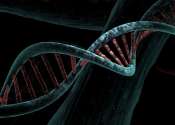See-through zebrafish, new imaging method put blood stem cells in high-resolution spotlight
For the first time, researchers can get a high-resolution view of single blood stem cells thanks to a little help from microscopy and zebrafish.

For the first time, researchers can get a high-resolution view of single blood stem cells thanks to a little help from microscopy and zebrafish.
Cell & Microbiology
Aug 10, 2022
0
42

Scientists at Utrecht University have discovered a new mechanism antibiotics use to kill bacteria. The antibiotic teixobactin uses a dual molecular strategy: it blocks the bacterial cell wall synthesis and destructs the cell ...
Cell & Microbiology
Aug 3, 2022
0
393

The cells in your body are not all the same. Each of your organs has cells with very different functions. For example, liver cells are top-notch secretors, as their job requires them to make and export many of the proteins ...
Cell & Microbiology
Aug 2, 2022
0
6

A tiny marine creature with a strange lifestyle may provide valuable insights into human neurodegenerative disorders, such as Alzheimer's disease, according to scientists at Stanford Medicine.
Cell & Microbiology
Aug 1, 2022
0
139

A team led by Johns Hopkins University engineers figured out how and why human cells move much faster through thick mucus than thinner varieties. People sick with certain diseases, including asthma and COVID-19, secrete mucus ...
Cell & Microbiology
Jul 25, 2022
0
1

Scientists from the RIKEN Center for Integrative Medical Sciences in Japan in collaboration with other researchers from around the world have discovered that recombinations of specific genomic sequences that are repeated ...
Cell & Microbiology
Jul 25, 2022
0
195

In their study, the research groups looked at a protein called Creld. A study from Bonn had recently been able to demonstrate that Creld plays an important role in the development of the heart in mammals. "We wanted to find ...
Cell & Microbiology
Jul 22, 2022
0
6

Published in the Molecular Cell journal on July 19, a research study out of the Hatters Laboratory showed inappropriate protein aggregation is linked to poor outcomes for cell health and survival—especially in neurons in ...
Cell & Microbiology
Jul 19, 2022
0
16

To act as a robust barrier against pathogens while also absorbing needed nutrients, the lining of the intestines must regenerate on a daily basis to remain equal to the task. The intestine's resident stem cells are responsible ...
Cell & Microbiology
Jul 18, 2022
0
103

Harmful fungi cause enormous agricultural losses. Conventional techniques for combating them involve the use of poisonous fungicides. Researchers at Karlsruhe Institute of Technology (KIT), working with partners from Germany, ...
Biotechnology
Jul 15, 2022
0
41